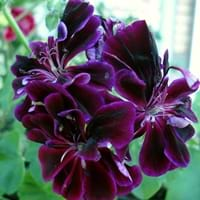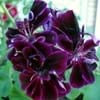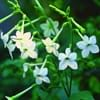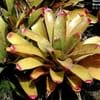Life Span
Annual
Perennial
Type
Tender Perennial
Grass
Origin
Hybrid origin
China
Types
Not Available
Not Available
Number of Varieties
Not Available
Habitat
All sorts of environments
Forest margins, gardens, Grassland, Tropical regions
USDA Hardiness Zone
10-15
8-15
AHS Heat Zone
Not Available
12 - 1
Sunset Zone
8, 9, 12, 13, 14, 15, 16, 17, 18, 19, 20, 21, 22, 23, 24
H1, H2, 8, 9, 14, 15, 16, 17, 18, 19, 20, 21, 22, 23, 24
Habit
Clump-Forming
Clump-Forming
Minimum Width
Not Available
Flower Color
Hot Pink, Coral
Not Available
Flower Color Modifier
Bicolor
Bicolor
Fruit Color
Not Available
Not Available
Leaf Color in Spring
Green
Light Green, Dark Green
Leaf Color in Summer
Green
Light Green
Leaf Color in Fall
Green
Light Green, Dark Green
Leaf Color in Winter
Light Green
Light Green, Dark Green
Leaf Shape
Acicular
Grass like
Plant Season
Spring, Summer, Fall, Winter
Spring, Summer, Fall, Winter
Sunlight
Full Sun, Partial Sun
Full Sun, Partial Sun, Partial shade
Type of Soil
Loam, Sand
Loam, Sand
The pH of Soil
Neutral
Acidic, Neutral, Alkaline
Soil Drainage
Well drained
Average
Bloom Time
Indeterminate
Not Available
Tolerances
Drought
Drought
Where to Plant?
Ground, Pot
Ground, Pot
How to Plant?
Leaf Cutting, Root Division, Seedlings, Stem Cutting
Seedlings, Transplanting
Plant Maintenance
Medium
Medium
Watering Requirements
Do not water excessively
Keep the ground moist but not water-logged, Requires regular watering, Use and maintain water-efficient soaker hoses, Use Mulches to help prevent water loss during hot and windy weather, Water every two or three days during warmer months, Water twice a day in the initial period
In Summer
Moderate
Lots of watering
In Spring
Moderate
Moderate
In Winter
Average Water
Average Water
Soil pH
Neutral
Acidic, Neutral, Alkaline
Soil Type
Loam, Sand
Loam, Sand
Soil Drainage Capacity
Well drained
Average
Sun Exposure
Full Sun, Partial Sun
Full Sun, Partial Sun, Partial shade
Pruning
Prune regularly, Remove damaged leaves, Remove dead branches, Remove dead leaves
Remove damaged leaves, Remove dead branches, Remove dead leaves
Fertilizers
All-Purpose Liquid Fertilizer, fertilize every 2-3 weeks while growing
All-Purpose Liquid Fertilizer
Pests and Diseases
Red blotch, Whiteflies
Red blotch
Plant Tolerance
Heat And Humidity
Drought
Flower Petal Number
Semi-Double
Single
Fragrant Bark/Stem
Yes
No
Foliage Texture
Medium
Medium
Foliage Sheen
Matte
Matte
Attracts
Not Available
Birds
Allergy
Not Available
no allergic reactions
Aesthetic Uses
Showy Purposes
Beautification
Beauty Benefits
Moisturizing, Skin cleanser
Not Available
Environmental Uses
Air purification, Insect Repellent
Air purification
Medicinal Uses
Fever, Intestinal irritations, Kidney problems, Respiratory Disorders, Wounds
Not Available
Part of Plant Used
Flowers
Whole plant
Other Uses
Cosmetics, Culinary use, Making Perfumes, Oil is used for aromatherapy, Showy Purposes, Used as a nutritious food item
Culinary use, Used in construction, Used in Furniture, Used in making musical instruments, Used in paper industry
Used As Indoor Plant
Yes
No
Used As Outdoor Plant
Yes
Yes
Garden Design
Bedding Plant, Container, Edging, Hanging Basket, Houseplant, Mixed Border
Container, Feature Plant, Hedges, Screening / Wind Break, Tropical
Botanical Name
PELARGONIUM 'Balgalpipn'
BAMBUSA multiplex 'Alphonso-Karrii'
Common Name
Hybrid Ivy-leaved Geranium, Zonal Geranium
Alphonse Karr Bamboo, Clumping Bamboo, Hedge Bamboo
In Hindi
Pelargonium
अल्फोंस Karr बांस
In German
Pelargonium
Alphonse Karr Bamboo
In French
Pelargonium
Alphonse Karr Bamboo
In Spanish
Pelargonium
Alphonse Karr Bambú
In Greek
Pelargonium
Alphonse Karr Μπαμπού
In Portuguese
pelargônio
Alphonse Karr Bamboo
In Polish
Pelargonium
Alphonse Karr Bamboo
In Latin
Pelargonium
Alphonse Karr Bamboo
Phylum
Magnoliophyta
Not Available
Class
Magnoliopsida
Not Available
Family
Geraniaceae
Poaceae
Genus
Pelargonium
Bambusa
Clade
Angiosperms, Eudicots, Rosids
Angiosperms, Commelinids, Monocots
Tribe
Not Available
Bambuseae
Subfamily
Not Available
Bambusoideae
Number of Species
Not Available
Season and Care of Pelargonium and Alphonse Karr Bamboo
Season and care of Pelargonium and Alphonse Karr Bamboo is important to know. While considering everything about Pelargonium and Alphonse Karr Bamboo Care, growing season is an essential factor. Pelargonium season is Spring, Summer, Fall and Winter and Alphonse Karr Bamboo season is Spring, Summer, Fall and Winter. The type of soil for Pelargonium is Loam, Sand and for Alphonse Karr Bamboo is Loam, Sand while the PH of soil for Pelargonium is Neutral and for Alphonse Karr Bamboo is Acidic, Neutral, Alkaline.
Pelargonium and Alphonse Karr Bamboo Physical Information
Pelargonium and Alphonse Karr Bamboo physical information is very important for comparison. Pelargonium height is 25.40 cm and width 30.50 cm whereas Alphonse Karr Bamboo height is 460.00 cm and width Not Available. The color specification of Pelargonium and Alphonse Karr Bamboo are as follows:
Pelargonium flower color: Hot Pink and Coral
Pelargonium leaf color: Green
Alphonse Karr Bamboo flower color: Not Available
- Alphonse Karr Bamboo leaf color: Light Green and Dark Green
Care of Pelargonium and Alphonse Karr Bamboo
Care of Pelargonium and Alphonse Karr Bamboo include pruning, fertilizers, watering etc. Pelargonium pruning is done Prune regularly, Remove damaged leaves, Remove dead branches and Remove dead leaves and Alphonse Karr Bamboo pruning is done Remove damaged leaves, Remove dead branches and Remove dead leaves. In summer Pelargonium needs Moderate and in winter, it needs Average Water. Whereas, in summer Alphonse Karr Bamboo needs Lots of watering and in winter, it needs Average Water.





